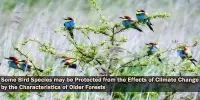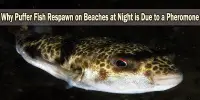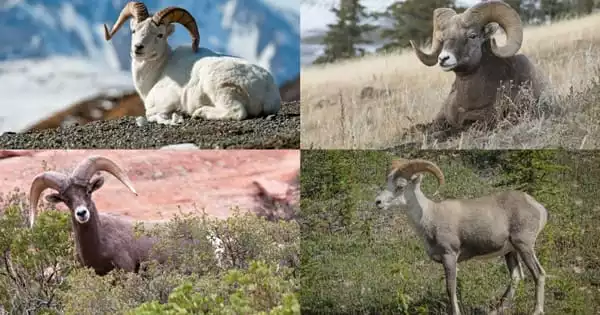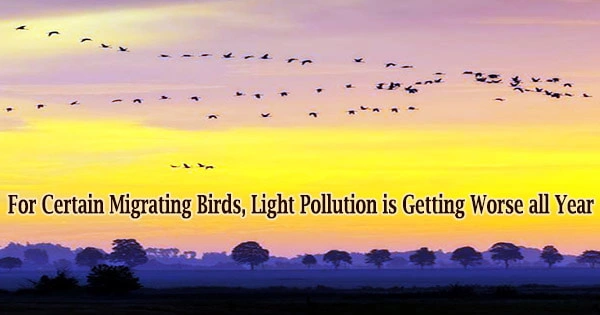Caribou, also known as reindeer, are large, wild, Arctic-dwelling members of the deer family. They are found in North America, Europe, and Asia. Caribou are well adapted to the harsh environment of the tundra, with thick fur and large, splayed hooves that help them walk on snow and ice.
According to a recent study by the University of Cincinnati, caribou have been using the same calving grounds in the Arctic for more than 3,000 years.
Within days of giving birth, female caribou shed their antlers, leaving behind a trace of their annual migrations across Canada’s Yukon and Alaska that endures on the icy tundra for hundreds or perhaps thousands of years. Antlers that had been untouched on the Arctic tundra since the Bronze Age were discovered by researchers.
“To walk around the landscape and pick up something that’s 3,000 years old is truly amazing,” said Joshua Miller, an assistant professor of geosciences at the University of Cincinnati.
He has been leading summer expeditions to the Arctic National Wildlife Refuge since 2010, using rafts to navigate remote rivers to search for caribou antlers exposed on the tundra.
“We think about having to dig down into the soil to find that kind of ecological history, but on the Coastal Plain, the vegetation grows extremely slowly,” Miller said. “Bones dropped by animals that lived dozens or even hundreds of generations in the past can provide really meaningful information.”
The study shows how crucial the region is for an animal on which native people from Alaska and Canada still rely for survival, despite efforts by energy companies to extract oil and gas resources in this protected area.
Caribou are known for their seasonal migrations, which can cover thousands of miles in search of food and breeding grounds. They are an important cultural and economic resource for many indigenous communities in the Arctic, providing food, clothing, and other materials.
We were in Arctic Village this summer, just south of the calving grounds, talking to elders about the changes they have seen. Where once it was open tundra, large stretches of this barren ground are now full of trees everywhere. What will happen to the barren ground caribou as this habitat gets converted into forest?
Professor Joshua Miller
The Biden Administration in 2021 suspended drilling leases in the Arctic National Wildlife Refuge, the largest tract of undeveloped wilderness in the United States.
“We know this region of the Arctic National Wildlife Refuge has been an important area for caribou for millennia,” Miller said. “That should give us pause on how we think about those landscapes.”
The study was published in the journal Frontiers in Ecology and Evolution.
Barren ground caribou travel up to 800 miles annually in what is considered to be nature’s longest overland migration to get to their spring calving sites in the Arctic National Wildlife Refuge and Canada’s Ivvavik National Park. Many tens of thousands of animals make up the greatest herd in this region, which bears the name of the Porcupine River.
Because they have fewer predators and provide seasonal vegetation close to locations where they may avoid the worst bugs, researchers believe that caribou frequent these regions.
“The mosquitoes are horrible,” Miller said. “You get swarmed literally covered in them. They can do significant damage to a young calf.”
For whatever motive, the antlers they leave behind serve as a tangible reminder of their epic yearly migrations, which scientists can decipher through isotopic analysis.
Similar to elk, deer, and moose, caribou antlers are comprised of quickly growing bone that the animals shed each year and grow back the next year.
“It is amazing to think that the oldest of the antlers found in our study were growing approximately the same time Homer was penning ‘the Iliad’ and ‘the Odyssey,’” study co-author Patrick Druckenmiller said.
He is director of the University of Alaska Museum and professor of the Department of Geology and Geophysics at the University of Alaska Fairbanks. Eric Wald from the U.S. Fish and Wildlife Service also co-authored the study.
According to Miller, the extensive Arctic reserve requires careful logistical planning for the antler surveys. Researchers and their equipment are dropped off by small planes well into the interior, where they must keep an eye out for grizzly and polar bears. In the Beaufort Sea, they pilot rafts while conducting a grid search of potential caribou habitat that had been foreseen by aerial photos.
“We search for antlers along old river terraces, walking back and forth, covering every inch of habitat to find those ancient treasures,” Miller said.
Female caribou antlers are substantially smaller than male caribou antlers, which can reach a height of four feet and weigh more than 20 pounds. The nutrients found in the antlers, like calcium and phosphorus, are crucial for both plants and animals.
The “nutrient sinks” created by the antlers could have a significant impact on the local plants. Miller said the caribou’s migration serves as a nutrient “conveyor belt” that might even draw caribou back to reap the benefits of this fertilizer in a reinforcement loop.
Caribou and other mammals are known to chew on dropped antlers for their valuable minerals. This could be an important dietary supplement for new caribou moms.
“We’d like to know to what degree this conveyor belt influences why caribou are going there in the first place,” Miller said. The study was supported by the U.S. Fish and Wildlife Service, the National Geographic Society, the National Science Foundation, the Wildlife Society and the UC Office of Research.
Miller said the Arctic is warming faster than other parts of the globe. Parts of the Arctic that were once barren tundra are sprouting new spruce forests.
“We were in Arctic Village this summer, just south of the calving grounds, talking to elders about the changes they have seen,” Miller said. “Where once it was open tundra, large stretches of this barren ground are now full of trees everywhere. What will happen to the barren ground caribou as this habitat gets converted into forest?”
















